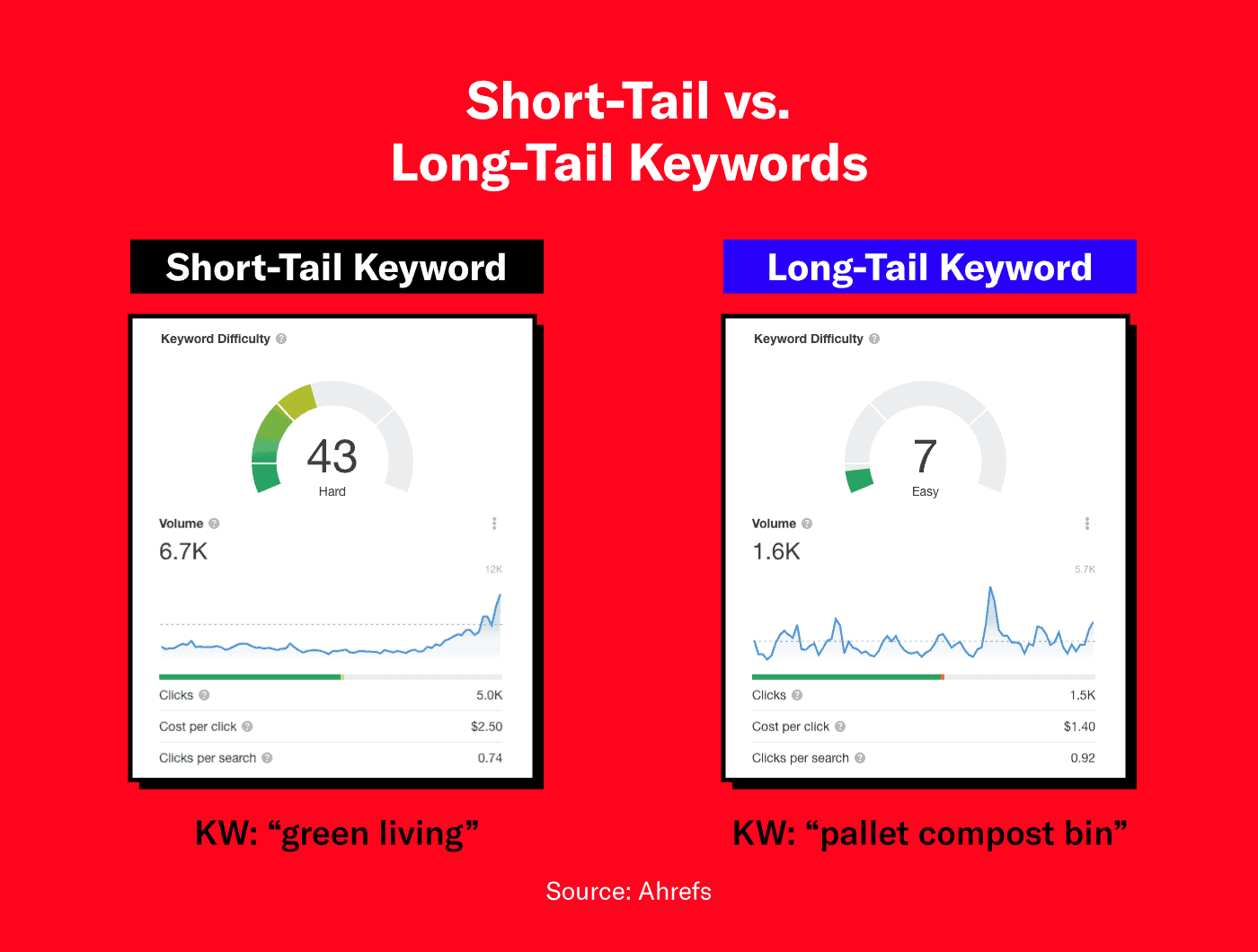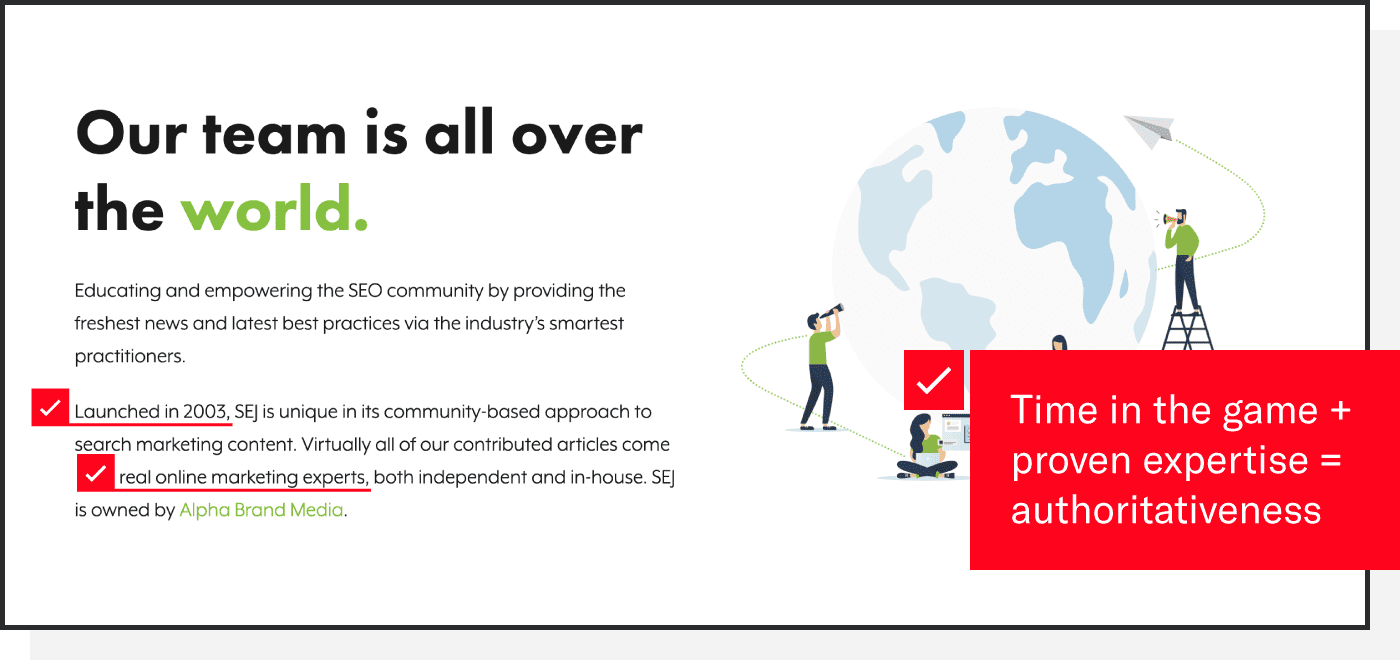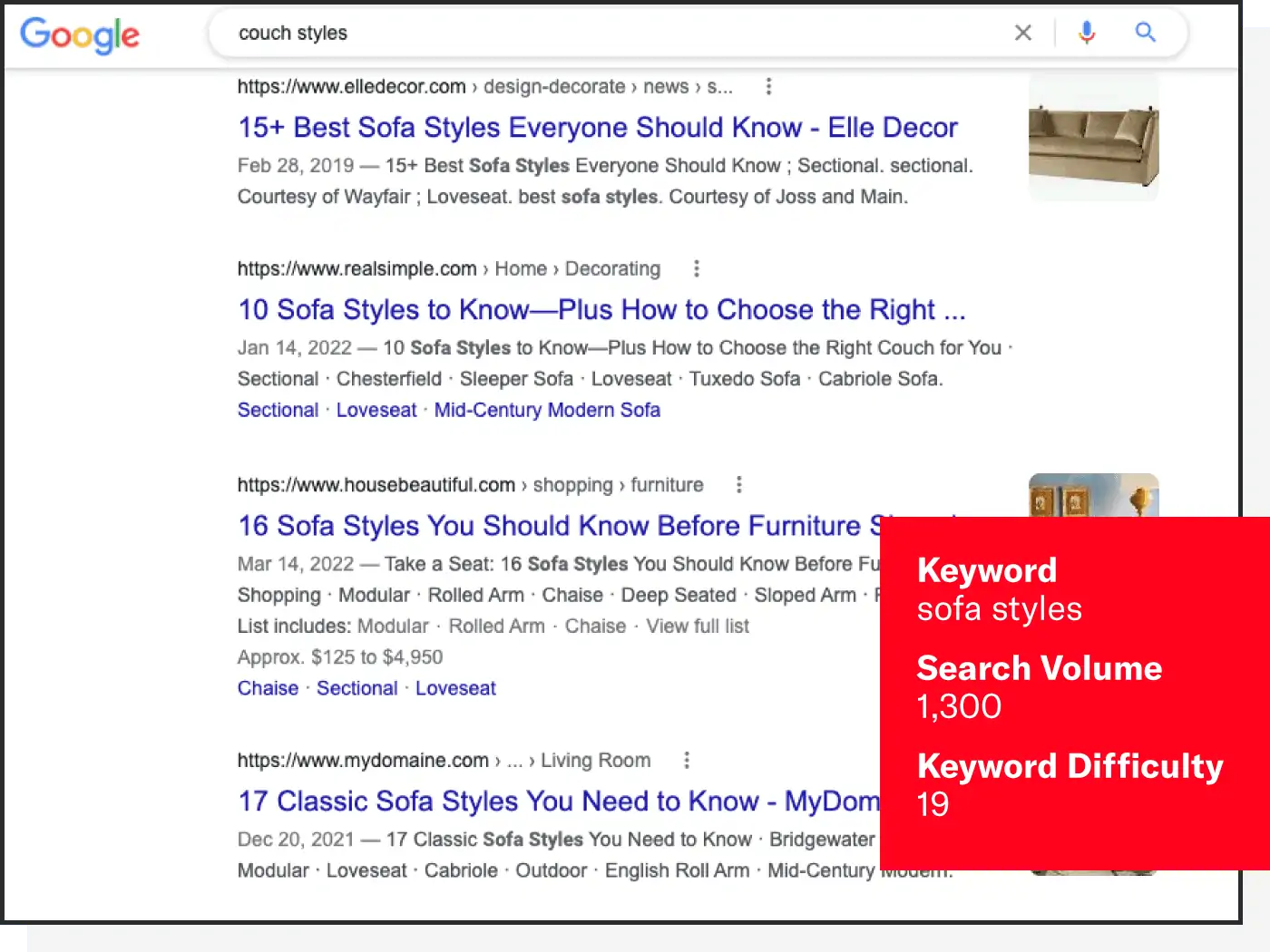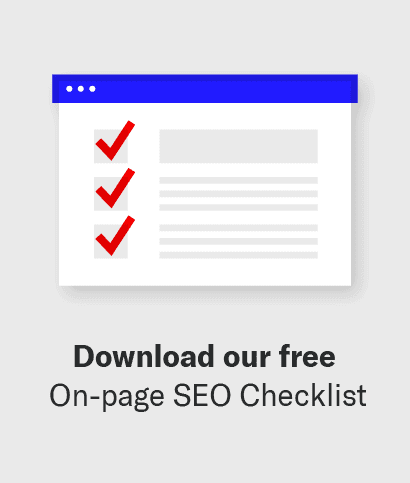Mathematically speaking, it’s possible to get infinitely closer to something and never reach it. The same can be said of perfect SEO.
The concept above is called an asymptote: a line extending toward a curve forever without intersecting. You probably see where this is going.
Since Google ranks search results with an ever-changing, proprietary algorithm, mastering the platform we use to connect with an audience is both essential and, yes, asymptotic.
That’s why only the best writers, brands, and agencies can rank content consistently.
But if it’s so difficult, why bother trying? First, because optimized content connects users to better information more efficiently. Second, because it leads to real, quantifiable value for a brand — just ask our clients, who have seen over $86 million generated in traffic value per year.
So, let’s dig into how, when done well, SEO content creation provides as much value for the end user as it does the brand.
What Is SEO Writing?
SEO writing is a strategy for increasing website visibility and traffic by aligning a webpage’s copy, structure, and metadata with a search engine’s ranking algorithms.
At its most basic level, SEO writing allows us to position our content in such a way that it’s more likely to:
- Show up in a user’s search engine results page (SERP)
- Get clicked on
- (Most importantly) deliver what they’re looking for
SEO writing isn’t only a marketing tactic — it’s an essential means of delivering information to living, breathing, curious people who may or may not be looking to purchase something right now.
In practice, this type of writing revolves around potential site visitors’ search queries — the words and phrases they type into a search bar. Search query data tells us three things about users:
- What they want to know (via their queries)
- What they value (via which links they click on)
- Why they click on what they click on (via commonalities between the top results for a given query)
Why SEO Content Writing Matters
Even if perfect SEO content is something of a moving target, it’s still possible (and worthwhile) to do it effectively enough to rank consistently.
Optimized website content writing matters because it helps align content with the expectations of the reader, which increases the likelihood that it will rise to the top of the SERP — specifically, Google’s.
Nearly 92% of total web searches are performed on Google. That means reaching an audience means optimizing for Google. And since reaching an audience means reaching customers, better SEO writing means more potential revenue.
In a perfect world, the best posts featuring the most thoughtful and objective research and writing would always pop up at the top of the results. Since this isn’t a perfect world, search algorithms have to calculate what makes one post better (i.e., a better match for a query) than another.
So, want to grow your organic traffic using SEO content (as we did for Norton)? Want to genuinely create better, more useful content that users can get real value from (as all content publishers should strive to do)?
Understanding SEO best practices and applying them thoughtfully will help you do both.
9 SEO Content Writing Tips
Google has hundreds of ranking factors — and none of us really knows for sure what they are or how they’re weighted.
However, there are a handful of tested ways we as SEO content writers optimize our clients’ content in such a way that Google is more likely to elevate it for targeted search queries.
Here’s how to write SEO content that stands a chance of ranking.
1. Know Your Audience
SEO writing starts before you type the first word. As we’ve outlined previously in our 19 content marketing tips, before you write a piece, you need to be sure you have a strong understanding of who will be reading it. Be sure you know:
- Who your audience is (and what matters to them)
- What kind of content they would expect your brand to be an authority on
- What specific terms, questions, or other queries they search for in relation to that content field
- What competing websites they’re visiting to access that content
Remember, great content starts with a sound content strategy.
How to Learn More About Your (Client’s) Audience
Whether you’re writing for your own brand or on behalf of a client, here are some vital sources for learning about the brand’s ideal audience:
- Any buyer persona documentation
- Copies of sales calls or demos
- Common questions from customers in the sales process
- Any existing branded FAQs
- New team member onboarding documentation and/or meetings
- Email form submissions
- Sparktoro.com, which allows you to quickly find relevant blogs, podcasts, and influencers
- Keyword frameworks that tie to pages likely to generate sales
2. Apply Long-Tail Keyword Research to Audience Research
Search data is the core of this research — every piece of content you write should be based on known queries your target market is searching for. Don’t just guess at what might appeal to that audience. Instead, cater each piece of content you create to a unique, specific keyword.
For example, let’s say you’re writing SEO-friendly content for a client that sells sustainable lifestyle products.
Rather than targeting short, general phrases like “green living” (short-tail keywords), aim for longer, more specific queries (long-tail keywords) that suggest the user is looking for more information, not just products.
While this piece wouldn’t necessarily be about a product someone could buy from the website publishing it, it aligns with the values and interests of people who would buy products from that site.
And while the long-tail keyword has a much lower volume of searches, it also has much less competition and should be easier to rank for. (We use these figures to create a numerical score for keyword ideas, called a KOB analysis.)
Specifically, we use Ahrefs to source most of our keyword research, but you could also use free tools like:
- Google Keyword Planner: Free, Ahrefs-like product from Google
- Google Trends: Google tool for tracking search queries over time
- Kparser: Generates keyword ideas (with paid upgrades)
- AnswerThePublic: Creates visualizations for real search questions and autocomplete suggestions
- Infinite Suggest: Suggests relevant keywords based on simple phrases and topics
- QuestionDB: Helps generate keywords and topic ideas by showing questions users ask in relation to a given topic or keyword
3. Start at the Start
Once people get to your page, they need to know they’re in the right place with a thoughtful, concise blog introduction. We recommend following the Attention, Preview, Proof, and Benefit (APPB) formula.
Attention
This is Writing 101 that many of us learned in elementary school — and have since forgotten.
The very first thing every piece of written content needs to do is grab attention. Whether it’s setting a narrative scene, giving a shocking fact, or posing an evocative question, the first few sentences should turn a visitor into a reader and keep them interested.
Here’s an example from The Zebra.
Preview
When a visitor comes to your page, they will immediately want to know that they can find what they’re looking for. Help them out with a quick summary, an explanation of the structure, and ideally visual elements like a table of contents or clear and organized subheadings.
Proof
If your brand isn’t ubiquitously known, they’ll also need to know why you’re qualified to provide this information. Links to case studies, author bylines or bios, peer review notices, and big-name affiliates or clients — not to mention attractive page design — can help you do this.
Benefit
What’s in it for the reader? Chances are, they can get the same (or similar) information from countless other websites. Keep them on your page by telling them what makes your content the freshest, deepest, most complete, most trustworthy, or most valuable.
4. Use Keywords Wisely
Most of us know by now that keyword stuffing hurts both user experience and site rankings, but it’s not always as simple as using the same phrase 10 times in one paragraph.
Google defines stuffing (in part) as using search phrases out of context or “not as natural prose.” You’re writing for humans, not algorithms — the algorithms just help get your content in front of the right humans.
Long-tail search queries are tools, not tricks. When utilized thoughtfully as user queries with demonstrated search volume, they lay a solid foundation for content for three reasons.
Rather than thinking of keywords as shortcuts to getting your page found, think of them as signposts that help search engines know they can direct certain types of traffic toward your page.
We recommend planting these signposts in each of these parts of your page:
- URL structure
- Image alt text (at least once)
- Meta description
- Title tag
- H1
- Intro
- H2s (at least one)
- Outro
As you can see, fundamental keyword best practices already lend your keyword(s) a pretty heavy presence. It’s the opposite of Thanksgiving dinner — no stuffing required.
Be Better
Always ensure that your content adds something better, more informative, more entertaining, or more useful to the conversation.
When we write SEO content, we have an intention to rank — but we also have a responsibility to readers. Being better than your competitors is great for helping your content outrank theirs, but it also reflects more fundamental questions.
If you don’t have a good answer for the above questions, you may want to reconsider your SEO and content marketing strategies before moving forward. A good litmus test is checking the top results on the SERP and seeing if those pages are doing things you think you can do better in terms of the five factors below.
Write Better Copy
Could the given topic use a more personable voice — or a more authoritative one? Can you produce something more readable, easier to follow, more entertaining, or better researched?
Give Better Information
Are the current top pages giving outdated, incomplete, or even misleading information? Fill in the gaps.
Present Better Design / User Experience
Studies show that we perceive foods as tasting better when they’re presented more attractively. It’s much the same with content. You can make the same information more digestible just by presenting it in a better-looking, more intentional format.
Scope Better
Can you produce an even more comprehensive “comprehensive” list, or home in on the best of the best options?
Give users more of what they’re looking for or less of what they’re not by publishing content that either expands on existing knowledge or cuts through the chatter for complex topics.
Have Better E-A-T
Standing for Expertise, Authority, and Trustworthiness, E-A-T isn’t actually a Google ranking factor, per se, because it isn’t easily quantifiable.
But during a roundtable earlier this year, Google Search Advocate John Mueller suggested there are “indirect” effects based on E-A-T. That means if you convey it more strongly than other sites, your content may get a ranking bump.
Establishing E-A-T effectively can be tricky, but here are a few ways to do it:
- Show professional credentials through author bios or pages
- Bring in external authority for quotes
- Include peer reviews from a credible expert in the field
- Display positive user, customer, or client reviews
- Include citations and/or works cited
6. Check the SERP Before You Write
Unless your brand is incredibly well known and your website carries a massive level of authority (and even then…), it’s not enough to just publish a page and then hope the right people happen to find their way there.
Before you commit to a keyword, search it to see what pages Google has already rewarded with page one placement. Your SERP analysis should clue you into a few key insights:
- What the searcher is expecting to find and click on
- Types of websites winning for the keyword
- Existing content and potential information gaps
- Optimal keyword phrasing
- Number of ideas (for list posts)
Let’s say you’re publishing content around home furnishings and you’re looking to highlight couches. You think a post on “couch styles” would align with your authority, be useful to readers, and allow you to promote in-house products.
A search of the phrase “couch styles” looks like this:
The SERP gives these insights (based on the list above):
- The searcher is expecting to find list posts
- Lifestyle blogs, magazines, and brands are winning for the query
- Since these are list posts, their depth is variable
- Based on title tags, the more viable keyword actually seems to be “sofa styles”
- The top post has 25 ideas, with the average number ranging from 15 to 18
Once you have a clearer, more grounded idea of what real users are typing into their search bar and clicking on, you’re ready to start outlining and writing content that matches their expectations (and Google’s).
7. Write Like a Reader
Think about the last time you looked something up on Google. When you found pages you thought might answer your query, how did you engage with them? Did you read each one start to finish?
Seems doubtful. As much as we (or maybe just I) want to believe everyone reads every last word of what we write, the fact is, users are more likely to cherry-pick the information they want from a post. (As you may be doing with this very piece.)
Contentsquare reported in 2021 that the average time users spend on webpages for all industries is 54 seconds. (If you’ve read this far, you’ve already well exceeded that time on this page.)
Also in 2021, Orbit Media found the average blog post is about 1,400 words long. If the average reading rate is 238 words per minute, that means the average blog takes about 5.9 minutes to read. You do the math.
Here are a few ways you can meet readers where they are:
- Keep sentences clear and concise (ideally no longer than two lines)
- Try to keep paragraphs under four lines or so
- Never stuff with unnecessary filler just to meet an arbitrary word count
- Organize your content so users can easily hop around the page to get the information they want
8. Keep It Scannable
In some ways, the way your post is structured matters as much as what’s in it. A content writer has to meet users where they are and be mindful of their reading habits (or lack thereof). Consider these three examples.
SEMrush found that of the 1.2M posts they studied, posts that utilized H2s, H3s, and H4s to guide their structure saw the highest levels of traffic and engagement. Let’s dig into both elements.
How Scannability Increases Webpage Traffic
Obviously, would-be visitors don’t know how your page is structured before they click the link in the SERP. But structuring your content with a logical line of headings and subheadings (and even sub-subheadings) helps ranking for a few reasons:
- It relays the purpose of the post to Google more accurately
- It shows Google which search queries it could answer
- It promotes better user experience, which can increase engagement, which encourages higher ranking
That SEMrush study also found posts with at least one list every 500 words gained nearly 75% more traffic than those that didn’t. Example: this very section.
How Scannability Increases Website Engagement
On a practical level, headers help keep content structured, focused, and scannable, which encourages visitors to stay, scroll, read, and click links.
Let’s say someone comes to your immaculately researched, expertly written 5,000-word post on dog breeds to learn about proper nutrition for their pit bull.
If they can’t easily spot a) a header on pit bulls, and ideally b) a subheader on feeding, you can expect them to hit the Back button and look elsewhere.
See for yourself. Which one of these do you think the hypothetical pit bull parent above would rather use?
9. Link Up
Google becomes aware of new webpages through the process of “URL discovery.” According to Google’s developer guide, webpages can be discovered when you submit a sitemap, but they also get discovered when Google follows links on known pages.
That means linking your content to other content on your website can help them get discovered.
When you add hyperlinks to your copy, it’s important to write anchor text (the copy that gets hyperlinked) that’s relevant to the destination page.
You can do this by aligning your anchor text as closely as possible to the destination page’s URL/slug, title, or target keywords. (Ideally, the same phrase should apply to all three.) Just be careful to diversify your anchor text so you aren’t repeating the same keyword again and again for the same URL.
Including relevant hyperlinks to your content within your content also allows users to easily move through multiple pages of your website. That means more engagement, more time on your site, and — ultimately — better rankings.
Other Types of SEO Content
For the purposes of this post, most uses of the word “content” are in reference to written/text media — generally blog posts. But there’s more to SEO content than just SEO blog writing. Here’s a non-comprehensive list.
- Keyword-Driven Blog Posts: Published regularly to a single feed on a website, these can be long-form or short-form and either timely or evergreen to align with an ongoing content publishing strategy.
- List Posts: Also known as listicles, this is a common type of post that typically features plenty of images and is great for providing ideas, inspiration, and product options.
- Landing Pages: Hosted as standalone webpages and not as part of a blog, these are designed to bring visitors to a site and usually feature a clear call to action like a sale, newsletter sign-up, promo code offering, or download.
- Pillar Content & Multi-Page Guides: For complex subjects, it can be helpful to have one central page dedicated to a broad topic that links out to multiple in-depth pages on related subtopics.
- Infographics: This type of content condenses complex ideas into a single image combining copy with illustrations and/or photos.
- Videos: Either embedded locally or hosted on a platform like YouTube or Wistia, this includes screen-share walkthroughs, presentations, animations, narrative films, etc. For some queries, Google may prioritize videos or pages that include them.
- Downloadable Files: This less common format includes PDFs, Word documents, spreadsheets, images, and other downloadable files. These can be offered to users as templates, manuals, whitepapers, lengthy visual guides, or printable materials like labels, decor, activities, and games.
- Interactives: Interactive content like calculators, text generators, quizzes, maps, and flowcharts allow users to (as the name suggests) interact with the content itself.
SEO Copywriting vs. Content Writing
Because copywriting and content writing serve similar promotional functions (and possibly because both start with a “C”), they can be easy to confuse.
Think of copy as text meant specifically for advertising which generally doesn’t provide standalone value to readers.
Content, in addition to providing marketing value to the brand, should also provide readers with information, inspiration, instruction, or other important values that may or may not start with the letter “I.”
Conclusion: What SEO Writing Is & Isn’t
According (again) to Google’s John Mueller, the publishing website as a whole factors into ranking individual pieces of content. So even if you publish the best, most useful content on your topic, it can only rank consistently if the rest of your website is optimized.
Getting content to rank on Google requires you to follow on-page SEO and general SEO best practices, like optimizing images, improving layout, increasing website speed, maintaining a clean URL structure, using keywords appropriately, etc.
But that only matters if you’re creating content worth clicking on.
As search algorithms get better at understanding user behavior, writing for search engines increasingly means writing for users. At its best, good SEO writing is just plain good writing. One end always serves the other.
As marketers, we’re the curve reaching for that elusive 45-degree up-and-to-the-right line on a graph. For us, that means using every content marketing service at our disposal to provide useful information people want — or even need — to engage with.



















